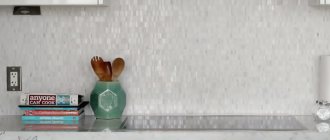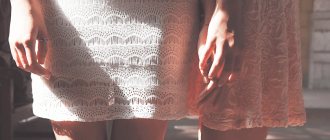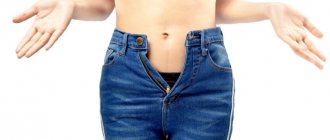The philosophy of minimalism is perceived by the majority as a special lifestyle, and the image of a minimalist is as a person with an Apple laptop in a snow-white loft with a cup of cappuccino. This picture is just the tip of the iceberg, and the path to minimalism has nothing to do with colors and certain brands. Marie Kondo is the author of the bestselling book The Magic of Tidying Up. The Japanese art of putting things in order at home and in life” and its own method. Among the many relevant literature, her book received the greatest resonance in the world. The principle of KonMari is quite simple: leave only things in your home that bring you joy. The remaining things need to be found in the right place to be stored and cultivate the habit of returning them to their place. In addition to order, this approach will help you build a completely new relationship with things and understand the essence of minimalism. “The whole point of getting rid of things you don’t need and keeping things you need is to be happy,” Kondo writes, and it’s absolutely true.
The KonMari system has become even more popular thanks to the 2022 Netflix series Tidying up with Marie Kondo, where an enterprising Japanese woman teaches American families about order in their home and life. In 2022, it is planned to launch the second season, in which they will “clean up” an entire American city. Only a large team can handle such large-scale projects, but in your apartment you can easily figure it out on your own.
Where to start a global cleansing
A big goal on the path to getting rid of excess begins with local steps. Kondo recommends a simple-to-complex approach, from everyday clothing to things we have an emotional attachment to. Such cleaning should take place not by storage area, but by category.
Advertising on Forbes
It is recommended to start with the wardrobe. The basic rule is to pick up every item. Tactility is very important in this process because body cues can be received through touch. During such analyzes, among things we often find those that we carry out of inertia: something was bought impulsively, something is the result of an erroneous vision of ourselves.
The most important thing is not to try to deceive yourself and keep an open mind about your intuitive feelings. If you realize that a T-shirt that you really like has shrunk a size or is covered in pills, think about whether it makes sense to keep it in your wardrobe.
Tip: Tackle one category of items at a time. Collect it all in one place at once to see the real number of items. This is sobering and naturally encourages you to get rid of excess.
Minimalism as a lifestyle: what are the disadvantages
Of course, with all the obvious advantages, you can also find disadvantages of this concept.
- Not all family members may share the same views. And this is my pain! Overcoming the resistance of a husband who, no, no, and even gets 5-year-old boots, is one thing. Snatching a toy from a daughter’s hands that she has long since outgrown is another impossible task. Children perceive new things more easily, and if parents show by their example how to approach things, this will become firmly established in their lives. For example, you can create a rule - a game - to throw away 20-30 unnecessary things once a week. These could be dried out markers, broken toys, written notebooks.
- At first, it will be very difficult to refuse tempting offers to buy 2 for the price of 1 or purchase a new product that will “dramatically change your life.” It makes sense to create rules that will help you form new habits. Go shopping well-fed and with a list. If you doubt the need for any purchase, give yourself time. If after a week, the opportunity to own this thing still gives you pleasure, you can safely return to it.
- At first it will seem that there is nothing to do now. This is the most pleasant disadvantage of minimalism as a lifestyle! After all, the very moment has come when you can do everything that you didn’t have enough time for. Whether it's a hobby, sports or reading books. When I stopped watching TV in the evenings, there was some irritation from a lack of understanding, but how can I actually relax now? And now it’s time for lectures on psychology, gymnastics classes for the face and heart-to-heart conversations with my daughter.
We're done with clothes, let's move on to books
Starting with clothes, you can move on to books, magazines and documents. It’s hard to throw away books because you have the feeling that you will re-read or read them someday. But the question “Do I really like this book?” helps to sober up. If it’s really hard, find your favorite one in the stacks and understand what sensations are worth catching. Books from other people's lists that have not been opened during the year will immediately go to the trash can. Some of them remain unpacked. It’s easier to sort the ones you’ve already read into those that are outdated and those that are really needed.
You can cut out your favorite articles from magazines and sort through documents. They will probably contain expired receipts, contracts, extra copies, used road maps and warranty cards from discarded equipment. These piles of papers have not been checked for years and take up unnecessary space not only in your apartment, but also in your head.
Tip: Create several folders for documents that need to be kept permanently (passport, diplomas, insurance), temporarily (warranty cards) and those that require processing (receipts, letters, checks). The third folder should be emptied regularly so that papers either go into the trash or into one of the storage categories.
“Enemies” of minimalism
We receive a huge dose of information every day. In the car, at work, from the phone and TV. Most often we don't need it. A colleague will pour the latest gossip into your ears, a toxic girlfriend will again complain about life. After such “communication” only a bitter aftertaste remains. It brings nothing but irritation. On the way home, the radio will tell you the latest news, and “Let Them Talk” will be in the background during dinner. Behind all this noise it is impossible to hear your thoughts, think, dream. And add to this an endless list of “friends” on social media feeds for dessert. Head is spinning! It is simply necessary to clear your living space of all this husk. Otherwise, the understanding comes that there is simply not a single thought left in your head.
Decluttering from everything else
The next category of things to be sorted in Japanese is called “komondo”, that is, items for various purposes. This includes bed linen, pens and notebooks, hobby items, and kitchen utensils. A new look at the usual number of things will help you see a lot of what has actually been lying untouched for years, but creates a feeling of disorder.
Some things are difficult to throw out, for example, out of guilt. Gifts from loved ones, whom we are subconsciously afraid of offending, numerous corporate mugs and pens, and simply long-lived items, the purpose of which we don’t even think about. By clearing your living space of unnecessary things, you will begin to feel more and more freedom. Not just from things, but from unnecessary attachments.
Tip: It’s logical to break the sorting of this large category of things into subcategories: stationery, bed linen and towels, cosmetics, tools, sports and hobby items, kitchenware, food supplies.
Why become a minimalist?
I can talk about what minimalism has done for me.
- It helped me quit a job I hated and pursue my dream career.
- This motivated me to give up my unhealthy obsession with fashion and beauty. Such passion made me ruined, unhappy and dissatisfied.
- This pushed me to focus on my health and look inward. And I realized that I need to take time every day to take care of myself.
- It gave me the courage to travel to the other side of the world with a backpack and a bike.
- Minimalism has allowed me to earn more and save more money. Now I do a job I love, work harder, and save money by avoiding unnecessary purchases.
- This forced me to reduce my overall consumption of things.
- Gave me the strength to give up alcohol, which had caused me countless problems in the past.
- Helped me discover more meaning in life and grow as a person.
- And of course it helped me get rid of a whole bunch of stuff.
Anyone can achieve this with minimalism .
The hardest thing is letting go of the past
The last category of things on the path to minimalism are memorabilia, diaries, postcards, letters, etc. If you have a lot of diaries, think about when was the last time you opened and re-read them? Do you feel bad about throwing away photos? At least get rid of duplicates. Can't let go of the past? Think about whether there is energy in this that helps you enjoy the present, feel free and open to new things.
Many things from the past have long since served their purpose, so it’s worth letting them go with all respect. The authors of the book “Minimalism” also write about this. Essential Essays by Joshua Fields Milburn and Ryan Nicodemus: “Our memories are not under the bed. They are inside us, not with our things. <…> Holding on to things weighs on us mentally and emotionally.” There is no need to throw everything away. Keeping a few items that are important to you and finding them a decent place to store them is the most important thing.
Tip: Things you can't get rid of can brighten up your apartment. For example, hangers can be decorated with rings or chains, or the inside walls of cabinets can be covered with memorable posters. The point is to make sure that all the items you value keep you in a state of joy, and not just collect dust in boxes.
Minimalism style = balance
Buying new things is inevitable. But it’s one thing when we do it at the behest of our heart, if we really like the thing. And it’s different when it’s hammered into your head by annoying advertising. New cars, gadgets - we are constantly instilled with the idea that only with them we will be “better, higher, stronger.” But in fact, while the car is driving and the phone is ringing, they are working and performing their functions. On the other hand, it would be strange to see a modern director of steamship factories in a car from the domestic auto industry and with a Nokia with a flashlight in his hands. But if we don’t exaggerate, maybe this is a civilized, modern approach? A balance between a comfortable existence and avoidance of overconsumption.
We find a storage place for each item and put everything in its place
After global cleaning, you need to find a place for every item left in the house. This can be challenging and will require rethinking space and storage logic. Marie Kondo recommends storing clothes vertically to save space and clearing all open surfaces of items that often accumulate on tables, dressers and open shelves. Freedom from unnecessary things will give you a feeling of fullness and recharge the energy at home. At the same time, there will be a clear understanding of the real number of things in different categories, and the feeling of lack of something may completely disappear.
Tip: Marie Kondo recommends four storage principles: fold correctly, stack upright, store in one place, and divide storage space into rectangular sections.
Steps to a new life
So you've decided to become a minimalist. What should you do first? Psychologists recommend starting the process by going through your wardrobe and at the same time following the following principle: an item that has lain idle for one year definitely goes to another owner. Then you need to get rid of the accumulated textile trash and only then move on to the next stage.
Step-by-step plan on how to become a minimalist:
- Get rid of unnecessary papers - old receipts, school notebooks, booklets.
- Go through all available books.
- Give away or sell uselessly stored toys, unused household appliances, and dishes.
- Throw out of the house all accessories and literature for creative work that is no longer relevant for family members (this applies to recent primary school children).
- Dispose of all “expired” items, from food to medicines and cosmetics.
- Distribute to your friends all the accumulated souvenirs that have no practical use.
- Remove excess furniture that clutters up useful space and does not meet its functionality.
This instruction is considered a necessary minimum for all followers of the idea of minimalism, and you can learn further how to become an absolute adherent of the concept.
How to understand when it's time to say goodbye to something
There is one principle for getting rid of unnecessary things: you need to ask yourself the question “Does this thing make me happy?” The author of the method suggests determining this through a tactile sensation: you smile and feel pleasant vibrations in your body - leave the thing, if you feel something unpleasant - get rid of it immediately. But this sorting criterion may not be clear to everyone, so there are tips from other experts. For example, the author of the book about minimalism, Fumio Sasaki, “Farewell to Things!” New Japanese Minimalism" offers more than 50 tips for aspiring minimalists:
Advertising on Forbes
- ask yourself: “If I suddenly somehow lost an item, would I want to buy it again at full price?”;
- discard things that you have not used for a year and do not intend to use in the future;
- throw away everything you keep solely for the sake of impressing others;
- give up the idea of justifying the money spent;
- throw away anything that creates visual discomfort;
- take photographs of the things you are going to part with to soften the blow (Marie Kondo also recommends digitizing letters, photos, newspaper clippings - it saves a lot of space).
There are also tips from the author of the book “Nothing Extra. Minimum things, maximum happiness" Nagisa Tatsumi, who inspired Marie Kondo to write the bestseller "The Magic of Tidying Up":
- don’t label things as “pathetic”, and it will be much easier for you to get rid of them (if you don’t use something because you’re sorry to ruin it, you’re killing the essence of things);
- do not leave things just in case (especially for papers);
- do not mix necessary things with useful ones, this will make it difficult for you to sort;
- do not elevate things that you have not touched for many years to the rank of “sacred cow”; throw them away!
- get into the habit of checking the expiration date of products;
- limit things to storage areas (closet shelf, drawer, number of hangers).
“I made him out of what was there”
Minimalism as a lifestyle involves simple, healthy food made from natural products. Every woman, when she leaves work, thinks about only one thing. What will I cook today? In the store, with hungry eyes, he throws into the basket what he needs and what he doesn’t really need. And so on day after day. Homemade homemade preparations will help reduce time in the kitchen. And if you create a menu and think through the products needed for it, then you can go to the store once a week. With the list you will definitely not buy unnecessary products.
The simpler the food, the better. I really liked the concept of 2-3 ingredients. Cereals + boiled meat, fish + baked potatoes, chicken + vegetable salad. Such dishes will not force you to spend the whole evening at the stove. And giving up mayonnaise salads, fast food and cakes will have a beneficial effect on your weight and well-being.
Our selection of cozy books includes books on the topic of “Minimalism” that will be interesting to read.
It’s impossible not to mention the food we throw away. This happens to almost everyone. Greens that have wilted, rotten tomatoes, moldy cheese or bread, sour milk. The resource that we spend on purchasing/delivery/cooking goes into emptiness! Not to mention our hard-earned money, which could definitely be put to better use.
Gratitude
In Japanese culture, Buddhism and Shintoism are deeply integrated into everyday life, so respect for things is part of a global attitude towards the world. Advising on getting rid of unnecessary things, Marie Kondo encourages her readers to thank each item for its service and only then throw it in the trash bag. And Fumio Sasaki recommends focusing on people. Feeling grateful to those who give or give you something is much more important than the things themselves.
Gratitude towards the human labor that is invested in clothes, electrical appliances, books, will help to form a more careful attitude towards what remains in your life. Sewing up a hole in a shirt, sending your worn but favorite shoes for repair, washing your bag of stains is an act of caring not only for things, but also for yourself.
- How to get rid of trash from your home: 10 tips from the most popular Japanese minimalist
Clean where there is no litter
The last point is the simplest. This is the transformation that will happen if you introduce the previously stated principles into your life. Freed from the hustle and bustle, anxiety, and constant race, more productive thoughts will begin to come to mind. There will be a chance to finally think about what you really want to do. Time and money will appear for desired hobbies, travel, and self-development.
The minimalist style includes many directions. Some are adherents of minimalism in clothing, while others are close to its basic principles in interior design. The spread of the now fashionable proper nutrition and various forms of vegetarianism, I think, is also one of the types of minimalism.
What I learned as a result of getting rid of unnecessary things
Don’t think that after global cleaning you won’t need to buy anything. But a new relationship with things will help formulate an important principle of choice. As Joshua Becker, author of Less Is More, writes, choosing better quality items can help you save money: “The less we spend on a lot of unnecessary things, the more money we have to buy expensive things when we need them.” . So, for example, I happily use an expensive but really high-quality laptop, I wear a single, but universal winter coat, and expensive but durable boots.
Author of the book “The Joy of Small Things.” How to get rid of junk, get yourself in order and start living." Francis Jay also gives recommendations to those who buy too much: "...repeat “enjoyment without possession” as a mantra when you go shopping. Admire the grace of a glass figurine, the intricate craftsmanship of an antique bracelet, or the vibrant colors of a ceramic vase, but don't take them home. Think of it like going to a museum.”
Advertising on Forbes
The arrival to minimalism is difficult to pinpoint at a specific point, because you will have to constantly get rid of unnecessary things. The main thing that can be a powerful experience is the understanding that many things form a distorted picture of ourselves. By throwing them aside, it’s easier for us to be in touch with ourselves, and in a space free from trash it’s easier to breathe and think. And this is the main value of this idea.
Less is more
The topic of clothes and women is an eternal topic. It is known that there is nowhere to fold, nothing to wear. I recently realized that I tried to persuade myself to buy some things. It’s fashionable now, we need to change the style and in general, there won’t be such discounts anymore. It sits fine! And now, you have a heap of packages at home, but the joy in your soul and the money in your wallet are as if it never happened. Going to the shopping center to buy “at least something” is no longer my story. I absolutely refuse to go into a store unless I'm going to buy something. It’s much more pleasant to choose a day, maybe go to another city and choose a couple of quality things that you really like. If these are natural fabrics, the right cut, then due to long wear, such shopping will also save you a certain amount.











